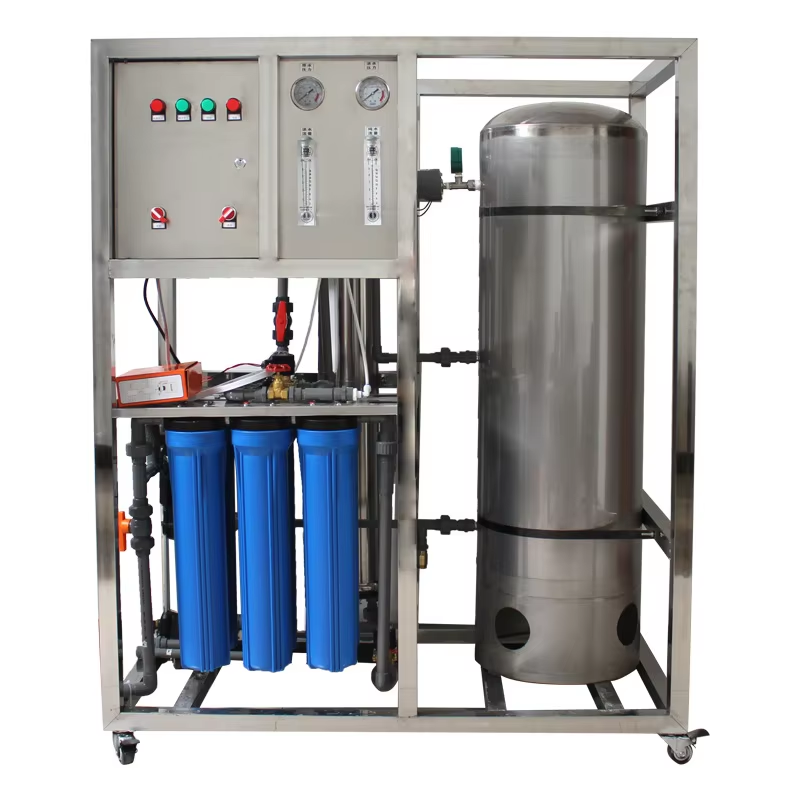1. Structural differences
Ultrafiltration (UF) technology is a membrane separation technology that uses pressure difference. It is a physical filtration membrane with a filtration accuracy range of 0.001-0.1 microns. It can effectively remove harmful substances such as rust, sediment, suspended matter, colloids, bacteria and macromolecular organic matter in water, while retaining some mineral elements that are beneficial to the human body.
The water recovery rate during the ultrafiltration process is as high as over 95%, and it is easy to flush and backwash, not easy to clog, and has a long service life. Ultrafiltration does not require electricity or pressure, and can be filtered only by tap water pressure, with large flow and low cost of use.
RO reverse osmosis technology (Reverse Osmosis) is a technology that uses pressure to separate the solvent (usually water) in the solution through a reverse osmosis membrane (a semi-permeable membrane). It is a more sophisticated water treatment technology. Its pore size is much smaller than that of ultrafiltration membrane, generally only between 0.0001 micron and 0.001 micron, which can remove almost all impurities such as heavy metals, organic matter, inorganic salts in water, and can also remove microorganisms such as bacteria and viruses in water, making the water quality purer.
2. Difference in water quality
The main difference between ultrafiltration and RO reverse osmosis technology in water quality treatment lies in the filtration accuracy and the ability to remove components in water. Ultrafiltration technology retains more minerals in water, while RO reverse osmosis technology can more thoroughly remove dissolved salts and organic matter in water. Ultrafiltration membrane is mainly used for primary treatment of drinking water, as well as filtration and recycling of industrial water. It has fast water output, large water output, pure physical filtration, low wastewater rate, but the filtered water cannot be drunk directly; RO reverse osmosis membrane is mainly used for deep treatment of drinking water and ultra-purification treatment of industrial water. It has low water output, slow water output, high wastewater rate, but high filtration accuracy and can be drunk directly.
3. Difference in application scenarios
Ultrafiltration (UF) technology is widely used in the field of household drinking water purification and agricultural irrigation because it can retain beneficial minerals in water and has low operating costs.
RO reverse osmosis technology is widely used in electronics, medicine, boiler feed water, industrial pure water and electronic grade high-purity water preparation, drinking pure water production, seawater desalination and other industries due to its high-purity water quality and efficient desalination capacity.
4. Difference in usage requirements
The pressure required for ultrafiltration is generally 0.07-0.7mpa, and the maximum does not exceed 1.05mpa. Reverse osmosis membrane Reverse osmosis membrane requires a higher operating pressure, generally between 1.5MPa and 10MPa. This is because the pore size of the reverse osmosis membrane is small, and a higher pressure is required to pass water.





生化膜反应器12-scaled.jpg)

